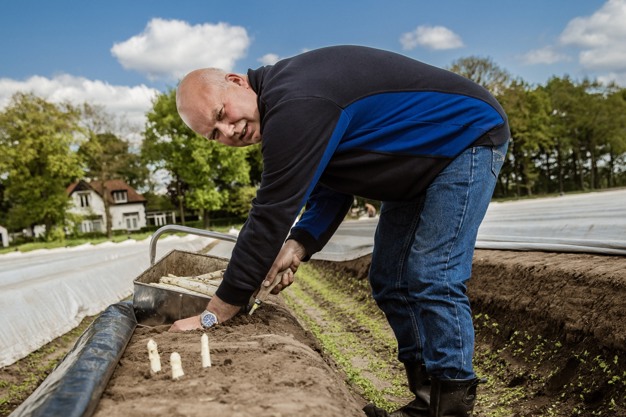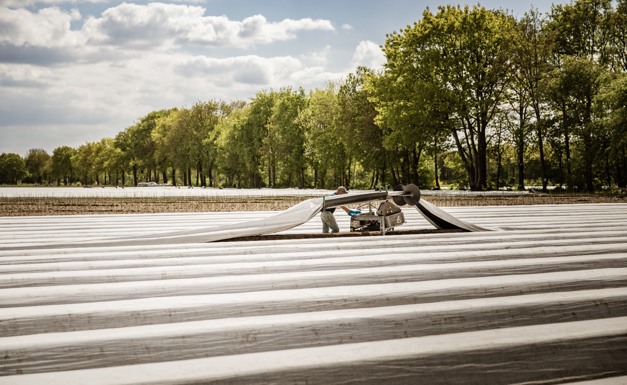In early April, Dutch asparagus grower Walter Gubbels reflected on a fantastic start to the greenhouse asparagus season. "We took a big gamble by betting on the greenhouse, but we started early in our two-hectare greenhouse and truly pushed hard. This year it paid off; prices are excellent," he says.
 Walter Gubbels
Walter Gubbels
That season is over, and the mini-tunnels are in full swing. Walter does not fear a price dip. "We thought last year's prices were good, but it seems they can get even better. And with the holidays on the horizon, prices certainly won't drop." That prompted him only to open his store on the weekend of April 5. "It's usually open sooner, but the €20+ prices meant it wasn't worth selling asparagus in the store. We sold everything through The Greenery," says Walter.
He doubts an ample supply will be available anytime soon. "Last year, entire fields were flooded. That led to a poor growing season, with even the great plots producing only moderate yields. Total production will, therefore, be much lower. The Prius variety, in particular, proved completely unable to withstand the flooding. The difference this year is unprecedented. Last year, the rain did plenty of damage; this year is the exact opposite. Everyone's irrigating."
No staff shortage
Gubbels has no issue with staff shortages either. "The minimum wage has risen, which attracts people. Poles want to come and harvest asparagus. Lately, there's been considerable competition from the German car industry, which offered longer-term employment. But Germany's economy is stagnating terribly, so all those workers are returning," he says.

"Demand is also looking good. Europe's total asparagus production is shrinking while demand is only rising. Asparagus's strength is still that it's a seasonal product that retailers and the hospitality industry like working with. If I were a young entrepreneur, I'd jump in with both feet. But I realize that's easier said than done. It's costly. Good soil alone is tremendously expensive and difficult to come by."
Walter focuses mainly on white asparagus. "We still grow a minimal amount of purple, but no longer any green. We had high hopes for that, but we simply cannot compete with cheap imported green asparagus. Selling white asparagus is more profitable. It sold for around €12 on April 7. That's already down from last week," he concludes.
This article was previously published in Primeur May 2025. Click here for the link to the entire edition
For more informationAspergekwekerij Gubbels
[email protected]
www.gubbels-asperges.nl
